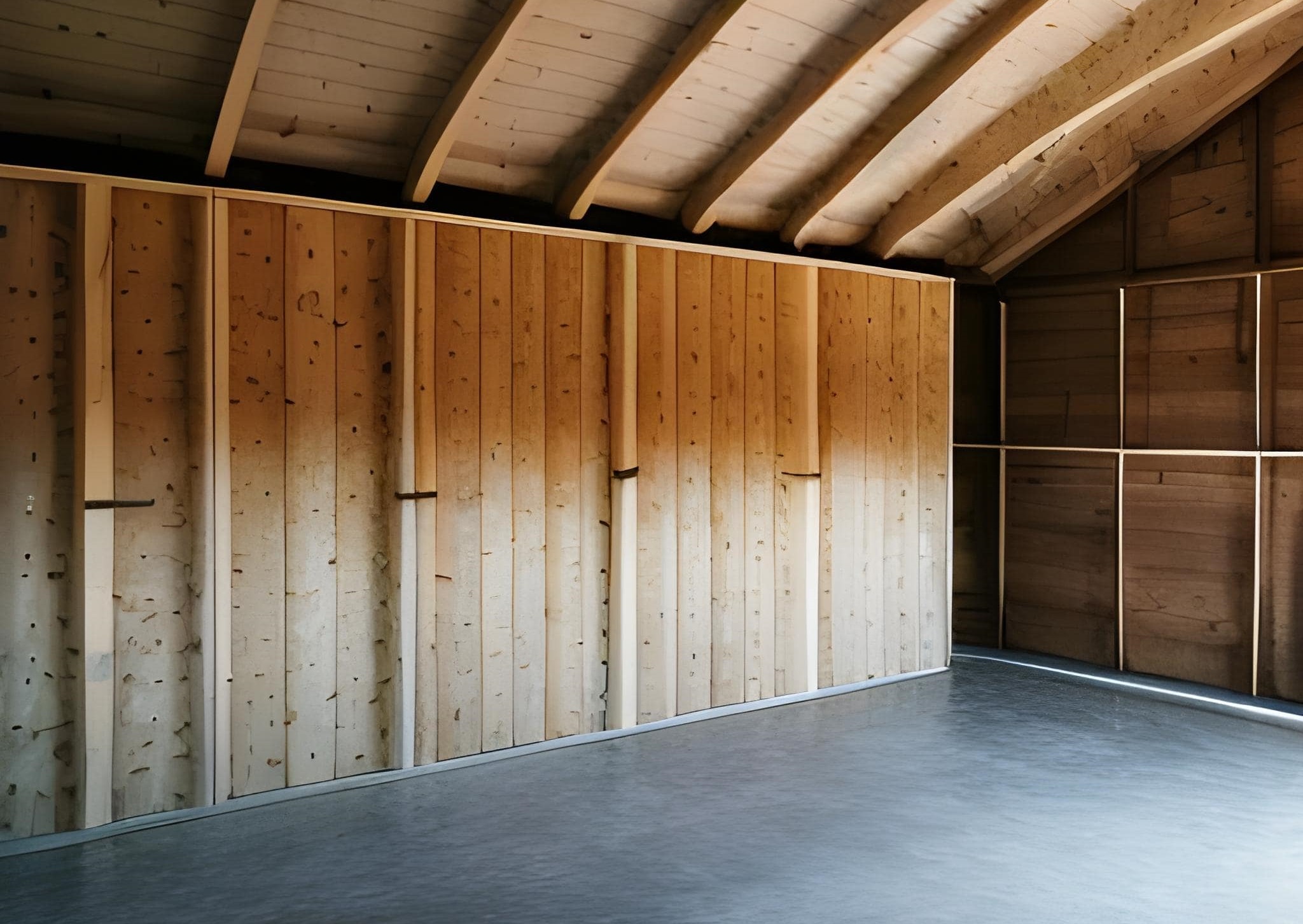The answer to whether or not you really need a foundation under storage shed will depend on your circumstances and how you intend to use the shed. (tag: do storage sheds need foundation)
In a perfect world with a big budget, yes … build your shed on top of a solid concrete slab. It’ll be a secure foundation for decades. A concrete slab, however, will add time and hundreds of dollars to your project. Therefore, you may opt for another popular option for your shed floor. Or you may choose to have no floor at all. Just four walls and a roof over dirt and grass. We’ve seen it done a variety of ways. So let’s get into the details.
Do Storage Sheds Need a Foundation
Foundations serve a vital purpose in the construction of buildings, providing stability and support. Traditionally, structures like houses and larger buildings require a solid foundation to ensure they withstand the test of time and environmental factors. However, storage sheds, being smaller in scale, raise the question whether a foundation is truly necessary.
First, let’s consider one important point. You’re concerned about this topic enough to seek info on it and read an article like this one. You’re actually researching the topic. This tells me you’re not the type of person who will be ok with a dirty or uneven floor.
With no foundation of any kind, moisture, insects and other creatures will have free reign in your shed. They will have as much access to the shed as you do. This makes the items you keep in the shed vulnerable to getting dirty and damaged.
I once had a shed like this when I lived in Florida. Every morning, I’d go in there and it was clear that lizards and bugs had walked all over my tools the night before. Plus, my belongings would often be wet due to the morning dew. In case you didn’t know, rust develops quickly on tools that repeatedly get wet.
Then again, that didn’t really matter to me since it was a terribly old, worn out shed. And I knew we would soon be moving.
Maybe your situation is the same. Perhaps you just need walls and a roof over your stuff and it doesn’t matter if it’s clean or dry. Or maybe your shed is just temporary. If that’s your case, sure … go ahead and proceed without a floor and save money.
Different Types of Shed Floors
However, I suspect that most you won’t be ok with a bug-infested shed in which the floor is occasionally muddy. You’re looking at your future shed not only for its convenience. But also for its long-term value as an investment in your property. That being the case, let’s look at a few types of shed foundations and explore their pros and cons.
1. Concrete Slab
If you’ll have lots of heavy machinery in your shed, you already know you need a concrete slab under it. When I say “lots of heavy machinery,” I mean more than one machine that weighs 500 to 700 pounds. If you have only one of these, you can go with one of the lighter-duty options for a floor. But if you have a riding lawnmower, ATVs and other like-sized machines, get a concrete floor.
Once in place, you’ll have no worries about the weight of the stuff in your shed. You’ll also have no concerns about any creatures crawling under or through your shed floor. There will be none.
Keep in mind, however, that getting a concrete slab will likely mean you must deal with two different contractors. It’s unlikely that a company specializing in high-quality slabs will also build you a high-quality shed … and vice versa. Don’t ask a contractor to do what he’s not used to doing.
Also, once the slab is poured, it will be days or maybe even weeks before the slab is ready to build upon. This may be further delayed by bad weather and the constantly-changing schedules of contractors.
2. Joist Floor on Gravel Pad
Another great option for a shed foundation is to build with pressure treated lumber on top of a gravel base. This typically requires the construction of a wooden perimeter that will reliably hold several inches of gravel for many years.
If you properly level the perimeter, you’ll have no trouble leveling the gravel within it. On top of the gravel base, you will then build a wooden floor with a standard joist design. If your gravel pad is level, your floor will be level too. In the following video by @Everyotherkarl, he capably demonstrates every step of the process.
Pouring a concrete slab is a hard-core task that is best for those who have vehicles to transport lots of concrete. A gravel pad, on the other hand, is a task you can DIY. Keep in mind, however, that it does require some heavy shovel work. Also know that it’s no fun to transport all the gravel from wherever they deliver it to where it needs to go. That’s a lot of heavy wheelbarrows. But if you need the exercise, go for it! You’ll sleep great that night. (tag: do storage sheds need foundation)
Another advantage of a joist floor on a gravel pad is that rainwater will nicely drain through it. This prevents the wooden structure from long-term water exposure. It’s good for the wood to have a chance to dry rather than sitting in water.
As for the cost, a joist floor on top of a gravel pad can be one of the more expensive options. Whereas a concrete slab enables you to avoid the material cost of a wooden floor, a gravel pad hits you with the cost of the gravel AND the cost of the wooden floor.
3. Joist Floor Elevated by Concrete Blocks or Piers
Lastly, and probably the simplest of all your options, is to build a joist floor and elevate it onto concrete blocks. This is our usual practice at The Houston Shed Company. With properly-placed blocks, you can easily create a square and level foundation for your shed floor, even on sloping grounds.
When a Foundation Might Not Be Necessary
1. Portable Sheds
Lightweight and portable sheds are designed to be moved easily. They often come with built-in flooring or can be placed directly on level ground without the need for a traditional foundation.
2. Temporary Storage
If your shed is intended for short-term or seasonal use, and you don’t plan on storing heavy items, a foundation may be an unnecessary expense.
3. Budget Constraints
For those on a tight budget, skipping a foundation may be a practical choice, especially if the shed’s intended use doesn’t require the additional stability.
In conclusion, a well-constructed foundation enhances the overall structural integrity of the storage shed, reducing the risk of sagging or leaning over time. Elevating the shed with a foundation helps to keep the structure above ground level, reducing the risk of moisture seeping into the floor and causing rot or damage to stored items.
While a foundation can offer added stability and protection, it might not be essential for all situations. Evaluate your specific circumstances, and weigh the advantages and disadvantages to make the most informed decision for your storage shed project.
Storage sheds are a practical and popular solution for homeowners looking to declutter their homes or create additional space for tools, equipment, or seasonal items. As you embark on the journey of acquiring a storage shed, one crucial question often arises – can we build a shed for you? Message us at houstonshedco@gmail.com or give us a call.

